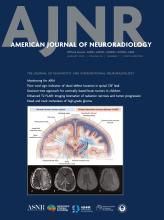Reply in Response to “Considerations on the Application of RANO 2.0 Criteria in Clinical Practice” with regards to our article “A Neuroradiologist’s Guide to Operationalizing the Response Assessment in Neuro-Oncology (RANO) Criteria Version 2.0 for Gliomas in Adults”1.
We would like to thank the authors of the letter for appreciating our work in providing an overview of the RANO 2.0 criteria2, and for raising the interesting question of whether such criteria should be applied in the clinical practice or exclusively in clinical trials. We hereby provide our collective responses to the concerns expressed in the letter.
First, we want to reiterate that our article is meant as a handbook for neuroradiologists and independent radiological facilities that intend to apply the RANO criteria for clinical trials. It is not our intention in the aforementioned manuscript to describe how to implement RANO 2.0 for clinical practice. Indeed, our article continuatively refers to clinical trial scenarios, and the use of RANO 2.0 for clinical practice is only mentioned to highlight some specific between RANO-compliant reads and clinical routine reads (e.g., the evaluation of post-surgical MRI scans). Nevertheless, we think that the topic of potential applications of concepts from RANO 2.0 in the clinical practice is relevant and we would like to refer the authors to a recent dedicated opinion paper we constructed3. In short, we agree with the statement that the strict application of RANO 2.0 in the clinical practice may oversimplify patient-specific treatment response assessment. Indeed, the primary objective of RANO 2.0 is to provide a standardized approach to maximize the objective comparability of results from clinical trials, which is not necessarily the best methodology for personalized medicine, which benefits from more nuanced evaluations about the patient-specific clinical considerations, qualitative evaluations, and advanced imaging (which is not included in RANO 2.0). In this regard, we agree with the statement that blindly applying the RANO cutoffs (e.g., 25% increase for progressive disease) and ignoring the non-enhancing progression in glioblastoma in the clinical practice is not the ideal strategy. However, RANO 2.0 provide concepts that can be applicable in the clinical practice, such as the use of post-radiation MRI scans as baseline in the newly-diagnosed setting and the use of confirmation scans for progression in the first three months. Indeed, these concepts are evidence-based4 and in line with other efforts meant for the standardization of treatment-response assessment in the clinical practice5. Additionally, we do want to point out that the RANO 2.0 are not “arbitrary”, as the authors of the letter state, because the RANO-defined objective response6 and progression-free survival4 have been extensively validated as surrogate endpoints that correlate with overall survival and have historic meaning for the field and for the U.S. Food and Drug Administration.
As for the concern about the criteria complexity, RANO 2.0 actually simplifies the overall criteria application because it aims at unifying the rules for treatment response assessment for all treatments and glioma types, as opposed to the previous separate sets of rules for immunotherapy7 and for low-8 and high-grades9. Of note, this unification process did not completely result in one unique set of rules, as the criteria can be adapted depending on the radiographic presentation (enhancing, non-enhancing, mixed) and depending on the treatment (e.g., use of confirmation scans ≥3 months after radiation in immunotherapy trials). To this regard, we want to point out that the “minor response” category is not new, as the authors state. It has been part of the RANO-LGG since 20118, and it was kept in RANO 2.0 only for non-enhancing tumors, precisely to limit inconsistencies. On the other hand, abandoning the evaluation of the non-enhancing components in glioblastoma is a new aspect of RANO 2.0, but it is justified by data4, and it should not trigger any “artificial” change in treatment response category due to “evolving definitions” because each patient should be assessed with consistent criteria throughout a clinical trial. More in general, we believe that the fear of inconsistencies should not prevent the change in criteria definitions when supported by data.
Finally, throughout the letter, the authors appear to be concerned both with the RANO 2.0 application being too arbitrary/subjective and with the RANO 2.0 application being too strict and not leaving room for a nuanced understanding of the patient-specific clinical status. While these two concerns are valid, they appear to point to opposite directions: should the criteria be more flexible or more rigid? Our opinion is that these criteria are meant for the standardization of the response assessment in clinical trials, and therefore should be as rigid as possible when applied to clinical trials. As scientists, we need to be critical and control as many variables as possible so we can attribute any changes to the experimental therapies being investigated. Indeed, our manuscript includes pragmatic cases and advice on how to manage complex scenarios and how to minimize arbitrary measurements. On the other hand, the potential application of these criteria to the clinical practice should be carried out with caution, observing some caveats, and, overall, with a flexible mindset that allows for personalized considerations on the specific patient.
Footnotes
Benjamin M. Ellingson and Francesco Sanvito contributed equally.
References
- © 2025 by American Journal of Neuroradiology












